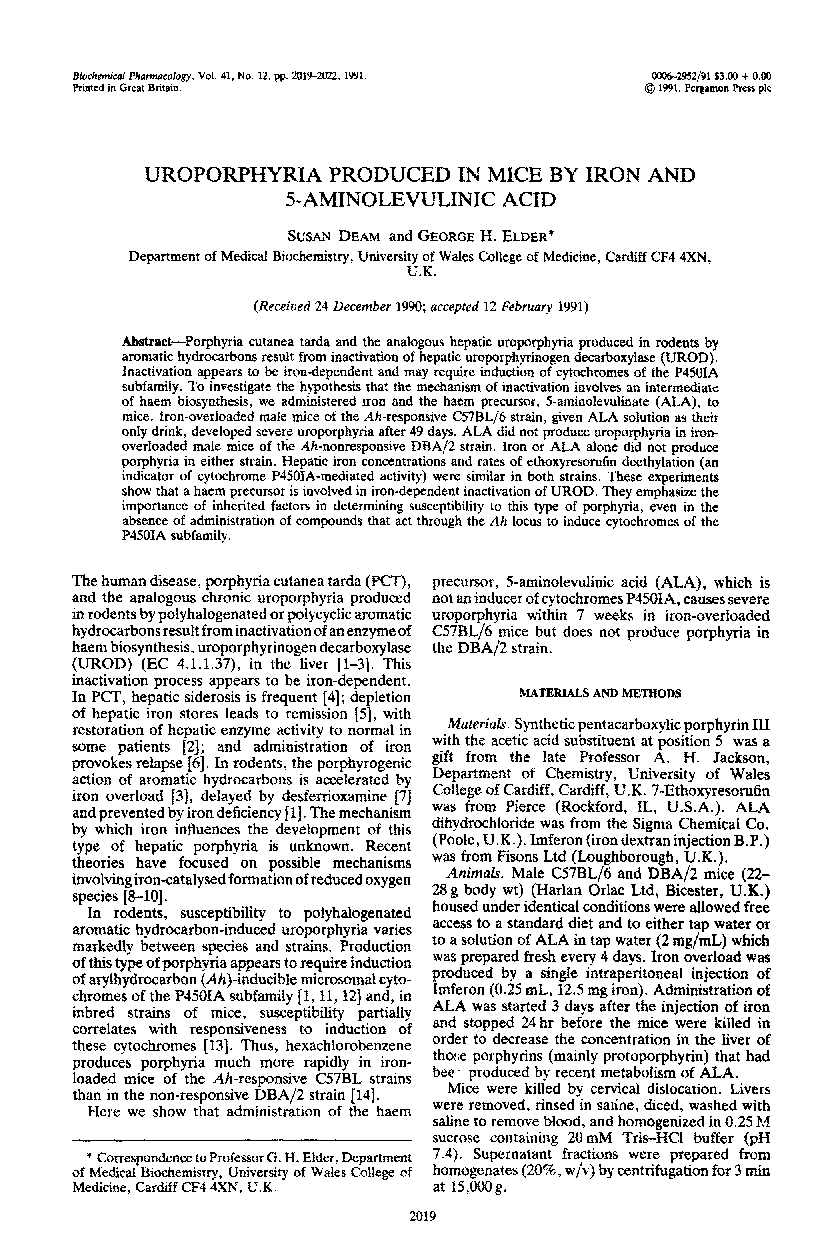| Article ID | Journal | Published Year | Pages | File Type |
|---|---|---|---|---|
| 2517089 | Biochemical Pharmacology | 2019 | 4 Pages |
Abstract
Porphyria cutanea tarda and the analogous hepatic uroporphyria produced in rodents by aromatic hydrocarbons result from inactivation of hepatic uroporphyrinogen decarboxylase (UROD). Inactivation appears to be iron-dependent and may require induction of cytochromes of the P450IA subfamily. To investigate the hypothesis that the mechanism of inactivation involves an intermediate of haem biosynthesis, we administered iron and the haem precursor, 5-aminolevulinate (ALA), to mice. Iron-overloaded male mice of the Ah-responsive C57BL/6 strain, given ALA solution as their only drink, developed severe uroporphyria after 49 days. ALA did not produce uroporphyria in ironoverloaded male mice of the Ah-nonresponsive DBA/2 strain. Iron or ALA alone did not produce porphyria in either strain. Hepatic iron concentrations and rates of ethoxyresorufin deethylation (an indicator of cytochrome P450IA-mediated activity) were similar in both strains. These experiments show that a haem precursor is involved in iron-dependent inactivation of UROD. They emphasize the importance of inherited factors in determining susceptibility to this type of porphyria, even in the absence of administration of compounds that act through the Ah locus to induce cytochromes of the P450IA subfamily.
Related Topics
Health Sciences
Pharmacology, Toxicology and Pharmaceutical Science
Pharmacology
Authors
Susan Deam, George H. Elder,
